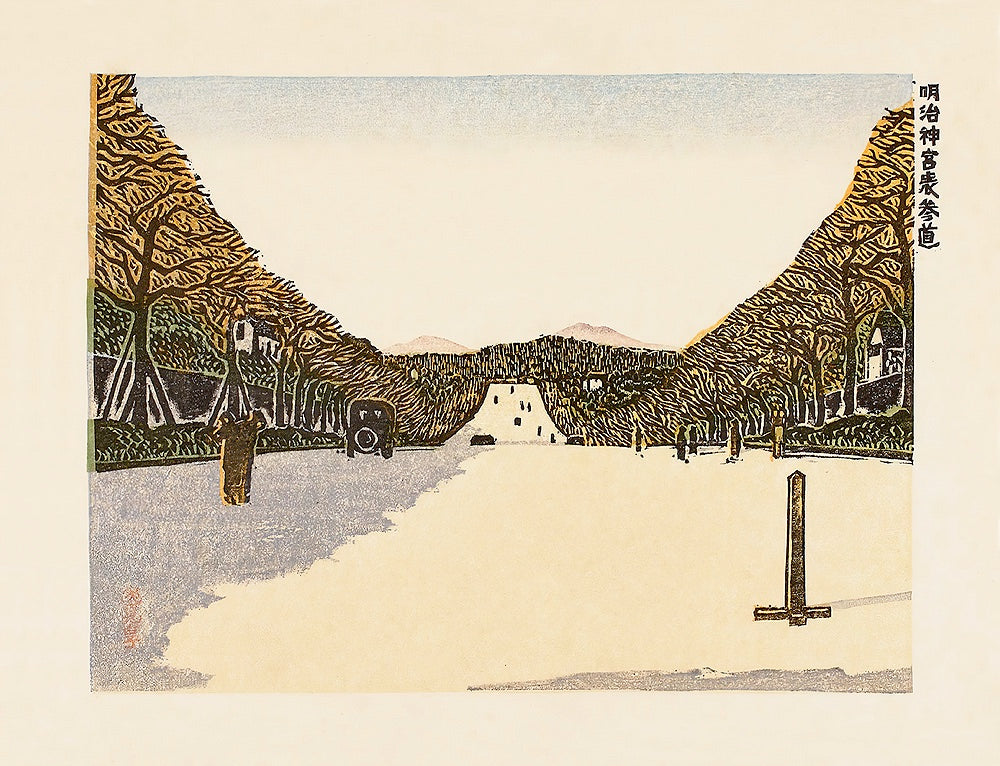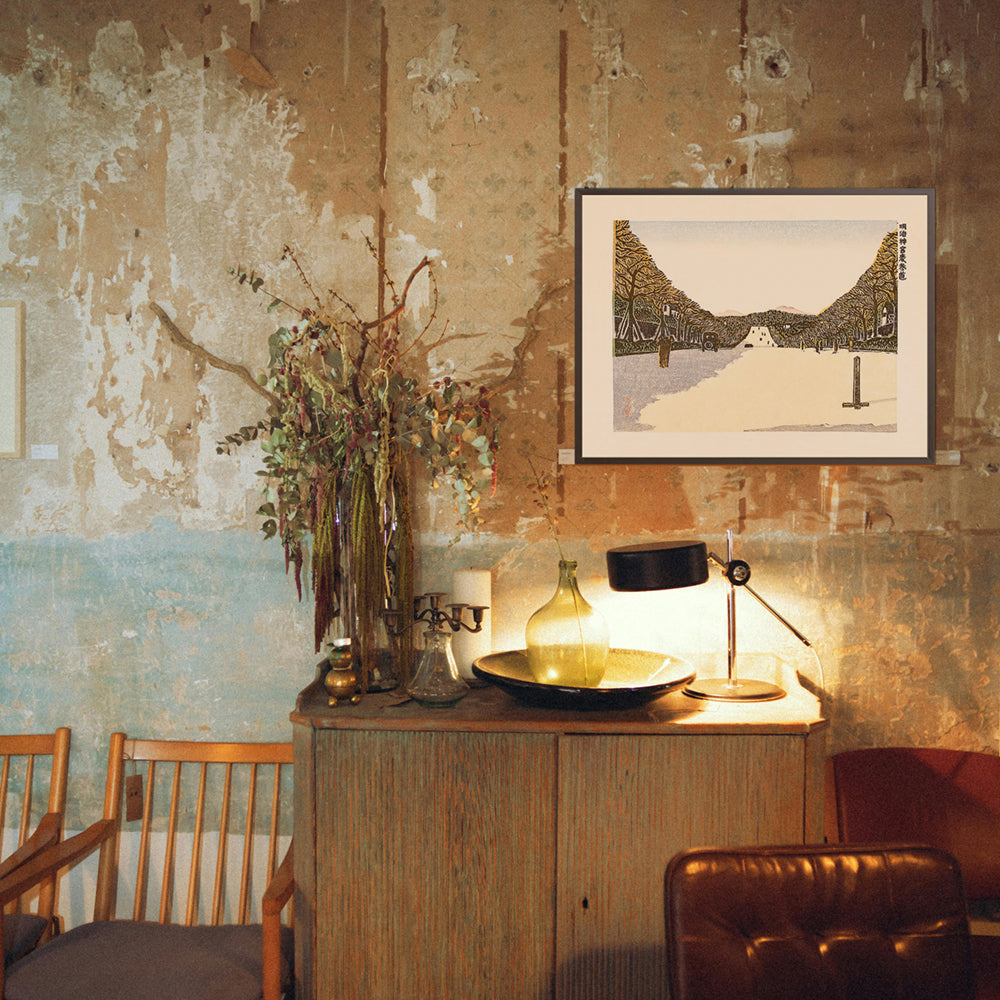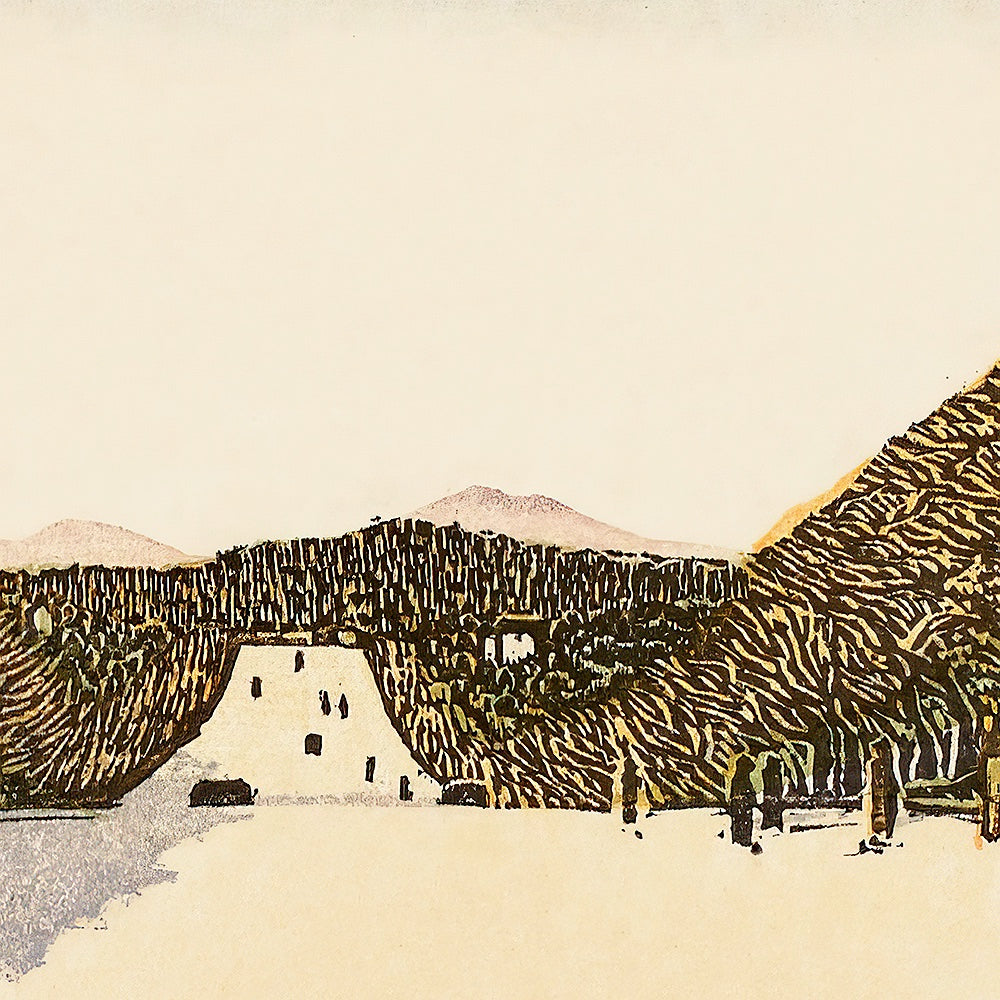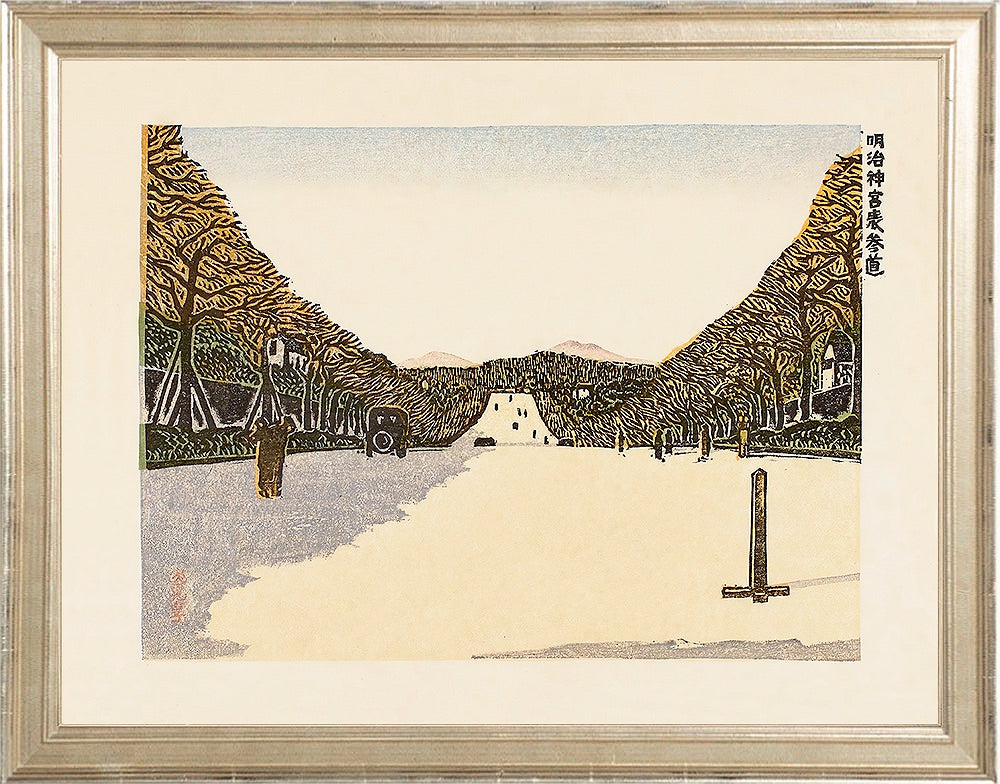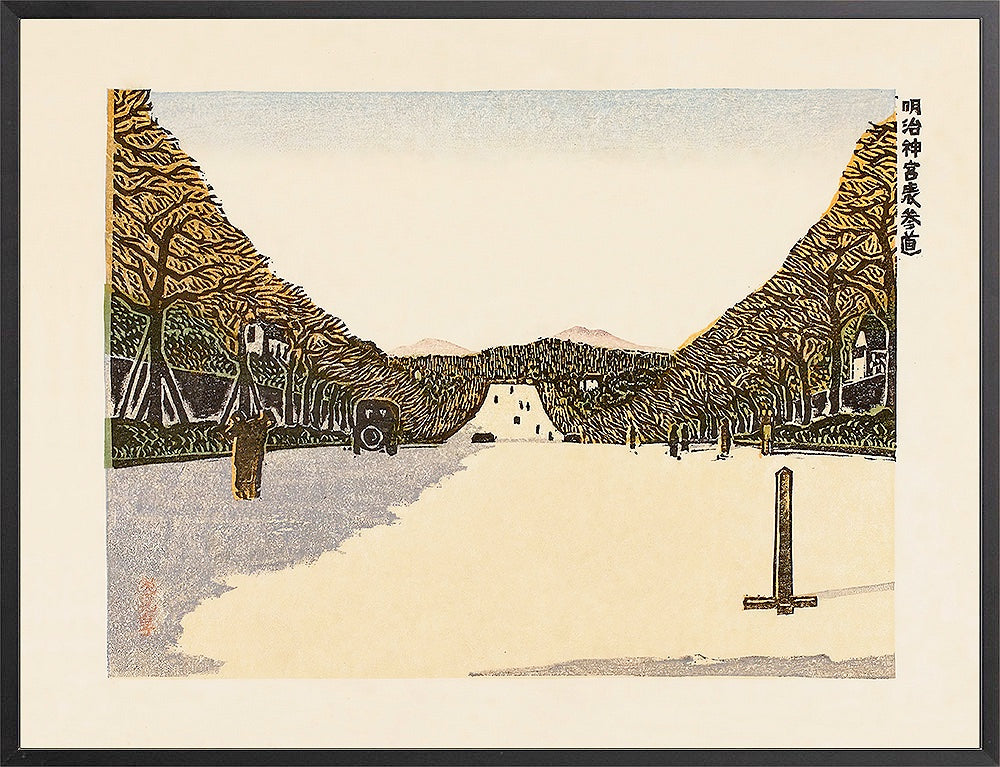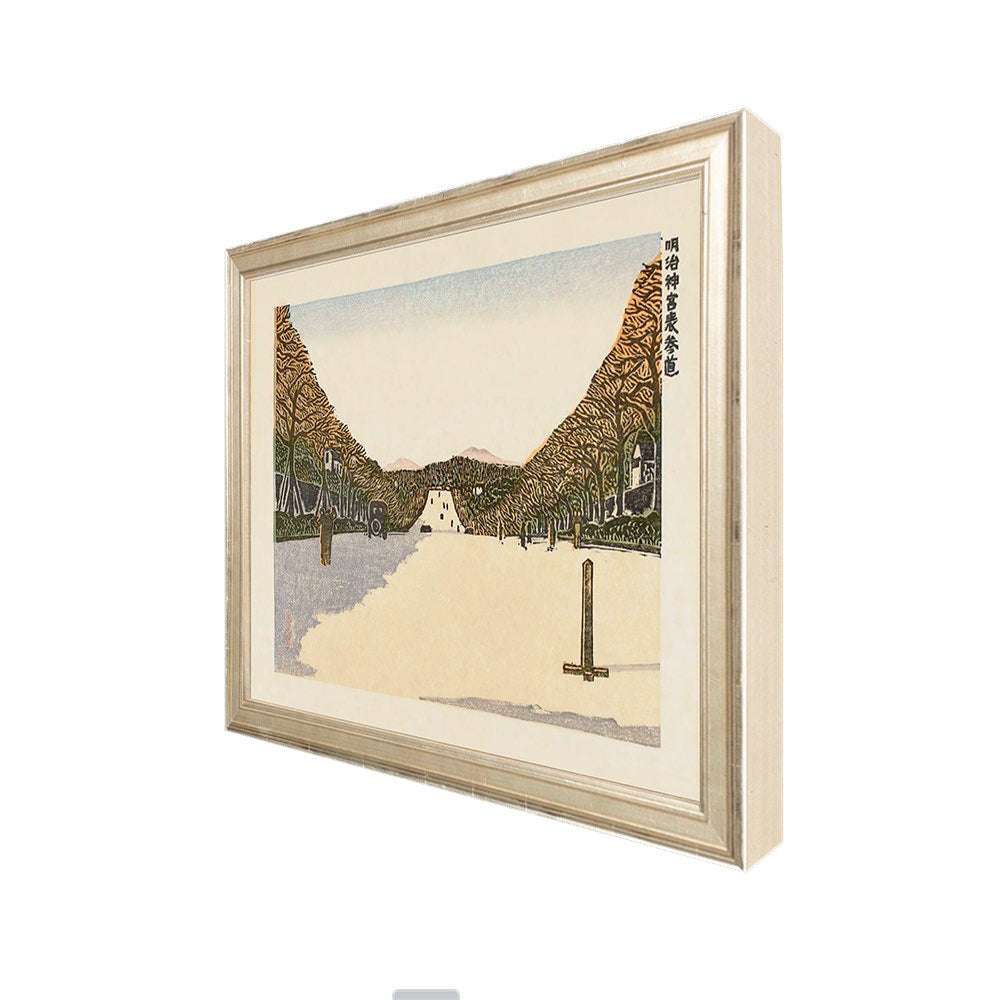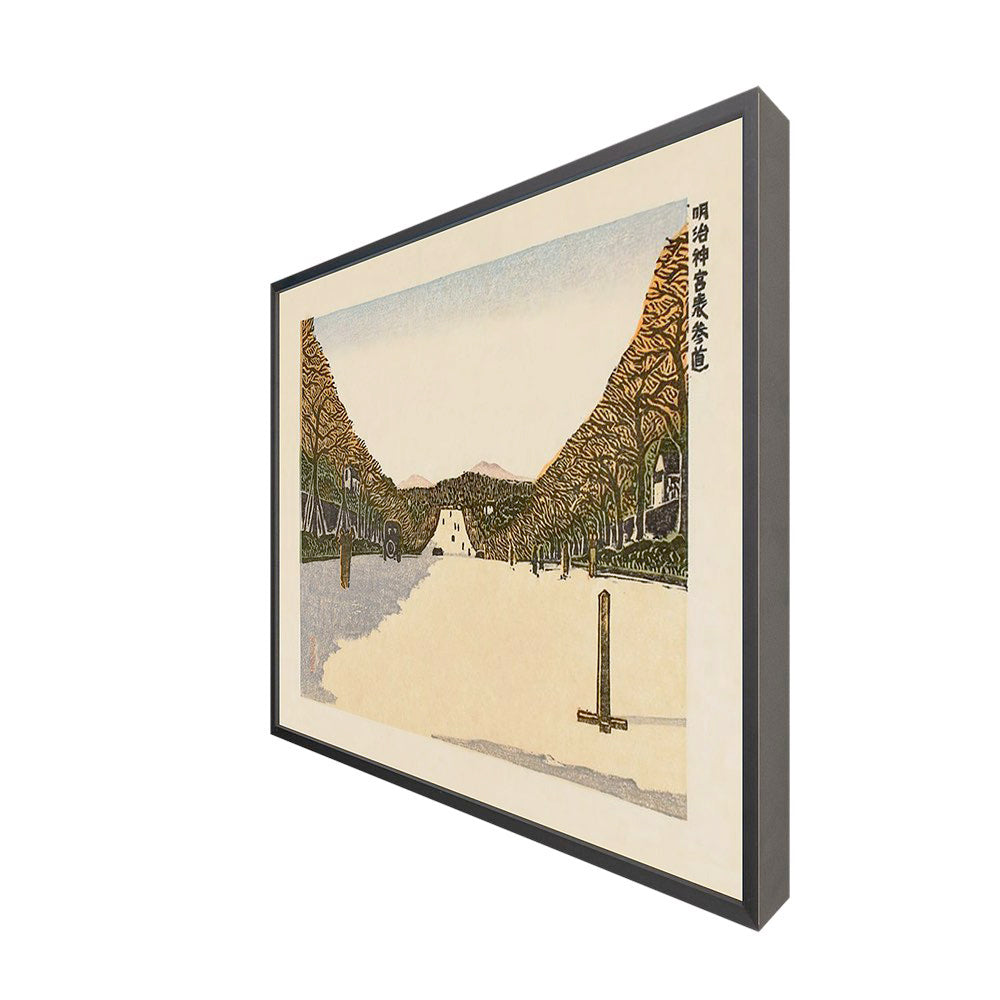LUXE EDITION
Road To Meiji
Road To Meiji
Couldn't load pickup availability
Shipping & Return Policy
Shipping & Return Policy
Print delivery: 5–11 days
Framed prints and decor: 2-3 weeks
Returns within 2 weeks
See policies in the footer
Luxe vs. Classic Prints
Luxe vs. Classic Prints
Luxe Prints – Premium prints on a variety of high-end fine art paper options and frames for a sophisticated presentation. Some fit standard frames, while others maintain non-standard historical proportions.
Classic Prints – Affordable, high-quality prints with a smoother finish for sharp detail designed to fit off-the-shelf frames. Classic prints have the word 'classic' above the title and a letter which shows the sizes that the print comes in. Size A– 4x6", 12x18", 16x24", 20x30" B– 6x8", 9x12", 12x16", 18x24", 24x30" C– 8x10", 16x20"
Understanding Our Print Sizes
Understanding Our Print Sizes
Historical prints vary in proportion based on their original format. Whenever possible, we match them to the closest standard size, using common print ratios like 2:3 (e.g., 8x12) or 3:4 (e.g., 9x12). However, resizing some prints can distort the artwork's integrity, so we can only offer them in their original proportions. Additionally, we use different printers for our product lines, and not all sizes are available with every printer.
Road Leading to the Meiji Shrine (Meiji Jingû Omotesandô) is a captivating woodblock print by the Japanese artist Henmi Takashi (1895–1944). Takashi's work beautifully captures the essence of the pathway leading to the revered Meiji Shrine, one of Tokyo's most cherished cultural landmarks. The scene depicted in the print invites viewers on a visual journey along the path, bordered by majestic trees and adorned with subtle yet evocative elements of Japanese architecture such as torii gates, stone lanterns. The woodblock was created within the Sōsaku-Hanga movement revolutionized Japanese printmaking by emphasizing the artist's autonomy and individual expression, departing from traditional styles.
Why We Picked It
Though the color palette is limited, the print skillfully evokes a sense of lushness, which contrasts with the starkness and singularity of the road leading to the shrine. This creamy tone evokes a sense of warmth and tranquility, complementing the overall mood of the print. The soft purple tones add a touch of depth and dimension to the landscape, creating a sense of distance and perspective. The trees depicted in a yellowish-green tone convey a sense of freshness and renewal. It composition invites the viewer to embark on a contemplative journey.
Notable Context
The Sōsaku-Hanga movement, revolutionized Japanese printmaking in the early 20th century. Unlike traditional ukiyo-e prints, which were produced collaboratively by artists, carvers, and printers, Sōsaku-Hanga emphasized the individual artist. Artists like Takashi embraced this newfound freedom to explore their own artistic visions, resulting in prints that were more personal and experimental in nature.
About the Location
The Meiji Shrine was established in 1920 to honor the legacy of Emperor Meiji and Empress Shoken. Emperor Meiji played a pivotal role in Japan's modernization during the Meiji Restoration era (1868-1912), while Empress Shoken was known for her philanthropic efforts and support of education and welfare initiatives.
The shrine serves as a symbol of Japan's cultural identity and traditional values. It embodies the reverence and respect that many Japanese people hold for their imperial family and their contributions to the nation's history and development.
The Meiji Shrine is situated within a vast forested area in central Tokyo, known as Yoyogi Park. The tranquil surroundings provide a peaceful retreat from the bustling city, making the shrine a popular destination for locals and tourists seeking solace and spiritual renewal amidst nature.
About the Artist
Henmi Takashi (1939-1992) was a celebrated Japanese painter and printmaker known for his contributions to the Sosaku Hanga movement.His stunning woodblock prints often depicted scenes from nature and everyday life in Japan. Takashi's prints are distinguished by their elegant lines, delicate color palettes, and a sense of tranquility that resonates with the Zen Buddhist influence in Japanese art.








